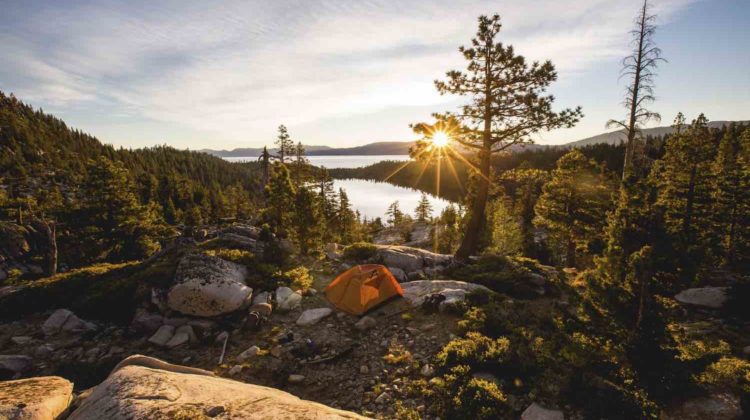
Camping is one of those great, classic adventures every family needs to do at least once when the kids are little. If you’ve camped before, you know how fun it is. If you haven’t, then these are the best tips to find and set up a campsite the quick and easy way. You’ll learn the essentials of a well-located campsite, how to lay it out, and some simple tricks to make it even more comfortable.
Your campsite is the most important part of your whole camping adventure. It’s your home base from which you’ll explore the outdoors. Your campsite can be anywhere: up in the mountains, out in the desert, along the coast, or even in your own backyard. No matter where you camp, your three basic needs are:
- Shelter (which you’ll learn in this post)
- Water (learn more here) [add recommended water filters]
- Warmth (learn more here) [add recommended layers]
But before we get to all that, let’s start with one of the most important steps:
Organize Your Camping Gear Before You Leave Home
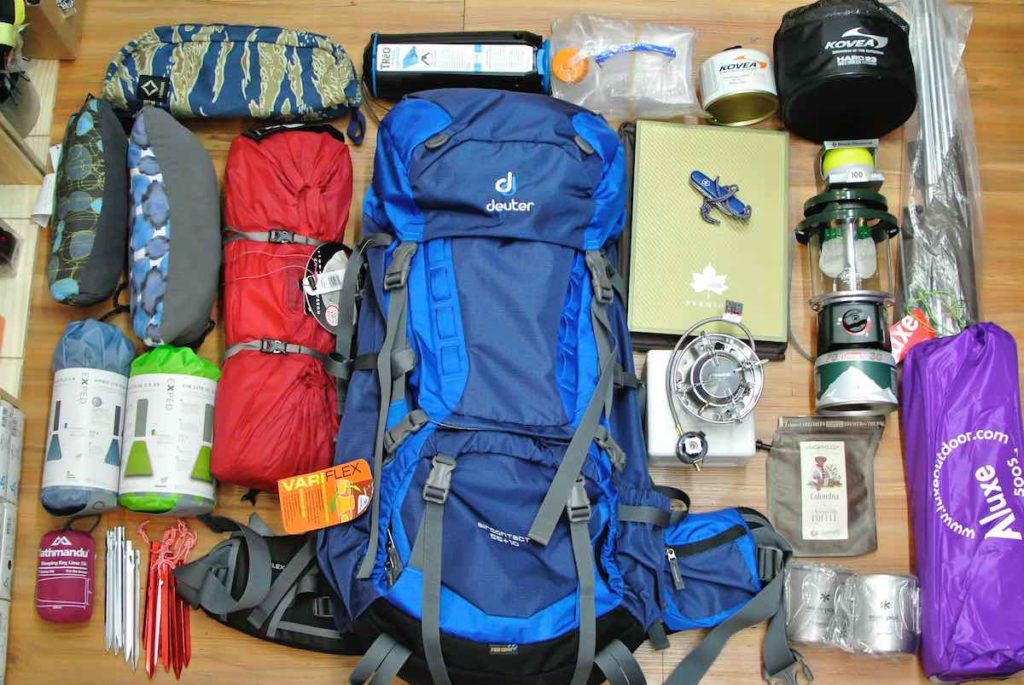
Photo by Karson Chan
Part of the fun of camping is the creative problem solving that comes along with using different gear than you’re used to at home. That said, it’s smart to be prepared for anything. You want to bring as much camping gear with you as you can reasonably carry. But there’s a balance between over-packing and under-packing. These checklists will help you be totally prepared:
- Best Camping Checklist
- First Aid Checklist [link coming soon!]
Already Have Camping Gear? Check It First.
If you already have camping gear, it’s smart to go through it all before packing it into the car. You don’t want to get to your campsite and realize something’s missing or worn out. Does your tent bag have stakes and poles? Are your batteries fresh? Is there fuel for your kitchen stove? You get the idea.
Have Your Kids Help Plan and Pack
Camping teaches kids all kinds of valuable lessons. One of the most important is what it takes to plan and pack for any adventure. To give them a head start, give them a packing checklist and backpack or duffel to fill with everything they’ll need. Remember to start packing at least a couple days before your trip to leave plenty of time for getting any missing items.
Pack a Camp Box, Or 2 Or 3
All you need is a couple plastic storage bins with lids. They’re cheap and help keep things organized. Make a camp box for your kitchen supplies with cookware, stove, plates, utensils, seasonings, and scrub pads. Create another camp box for your sleeping gear that includes your tent, sleeping bags, sleeping pads, lights, and anything else you need. Another great idea is to make a camp box for toys and sports equipment that holds fishing gear, storybooks, and coloring pages all in one place.
Now that you’re all packed up, let’s learn how to find and set up a campsite.
How To Find a Campsite
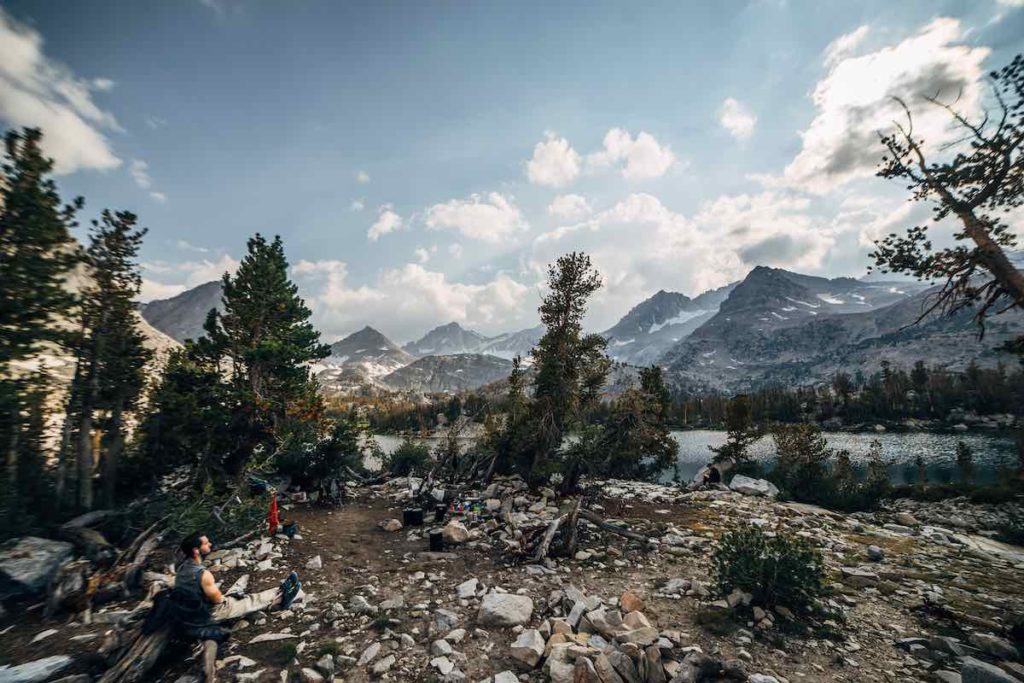
Photo by Robson Hatsukami Morgan
The first step in any camping adventure is choosing your campsite and setting up your tent. Whether you camp in the backyard, at a campground, or out in the wild backcountry, there are four common rules to help guide your search for the perfect campsite.
- Leave no trace. Maybe not as important in the backyard, but everywhere else the number one rule of camping is to leave no trace. Basically, that means you want to do no harm to the environment and leave your campsite just the way you found it. If you stay at a big campground, stay in designated campsites and pack out everything you bring with you. If you make your own campsite in the wilderness, minimize your impact and stay at least 100 feet away from water (rivers, lakes) and the trail you hiked in from.
- Keep it level. Because you’ll sleep on the ground you want your campsite to be level. Look for a site that is large enough for your tent and is free of tree roots and big rocks. Avoid heavily vegetated areas so you don’t trample plants. You can brush aside dead branches, pinecones, and small rocks so you have a smooth surface to place your tent floor. Remember to put these objects back after you pack up so that you leave the site just as you found it.
- Steer away from lows and highs. Avoid camping in low areas and high zones. Because cold air sinks, the lowest spot in any area will be the coldest. It can also be the wettest because water runs downhill. Also avoid high areas like hilltops and mountain ridges. Camping here will leave you exposed to wind, rain, snow, and even lightning.
- Trees are your friends. Set up a campsite among a group of trees and bushes. This is a great way to protect yourself from wind and rain. Trees will also give you shade in the heat of the day. Be sure the trees around your tent are healthy and standing straight. Avoid camping near widowmakers, or trees and large branches that have fallen and gotten hung up on the branches of other trees.
A few final tips for camping in different environments. When camping near wetlands, camp on higher ground away from water where it’s driest. If setting up camp in the desert, camp away from ravines and dry creeks where flash floods can occur. And when camping at elevation high in the mountains, camp in the shelter of rock outcrops or a group of trees. Avoid the highest point where you are most exposed.
How To Set Up a Campsite
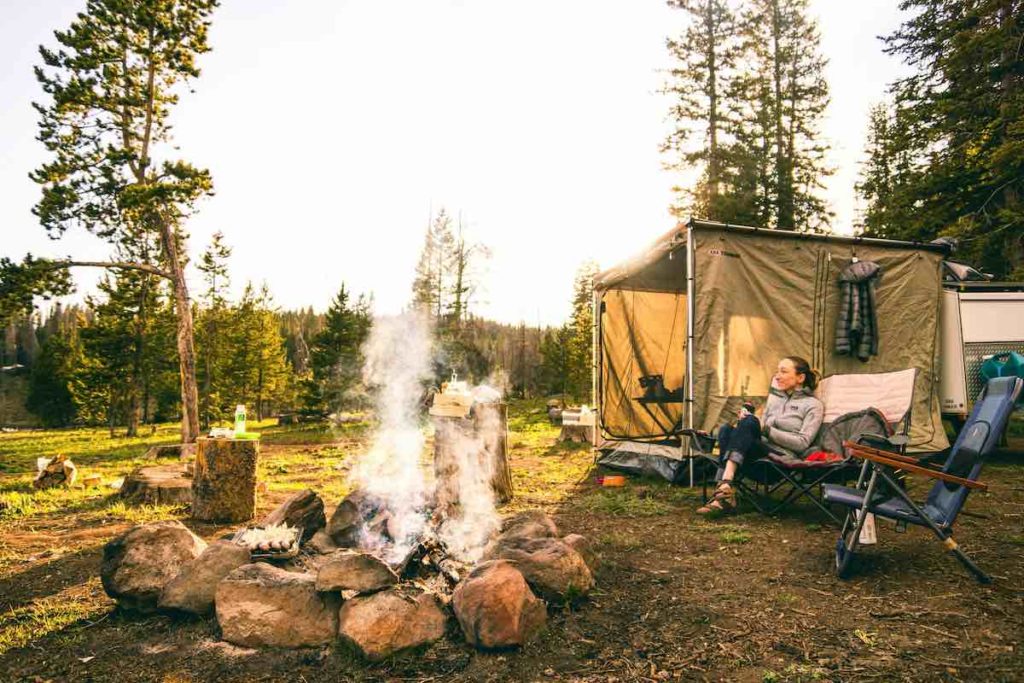
Photo by Chris Holder
After choosing the location of your campsite, the next task is to set up your tent and layout your kitchen and a common area. You’ll spend a lot of time in the common area so set it up where you have the best views. Put out folding chairs and your camp box of toys and sports equipment for easy access. The common area is usually where your fire pit will be too.
If your campsite has a picnic table, this will be the obvious choice for your kitchen. You can set up a folding table for your camp stove next to the picnic table. Or you can cook on top of the picnic table if it’s made of concrete or a non-flammable material. If your campsite is in the open, set up your kitchen where there is shelter from the wind. Protect your stove’s flames by placing your kitchen next to boulders or tall trees (avoid cooking near dry flammable shrubs).
How to Pitch a Tent
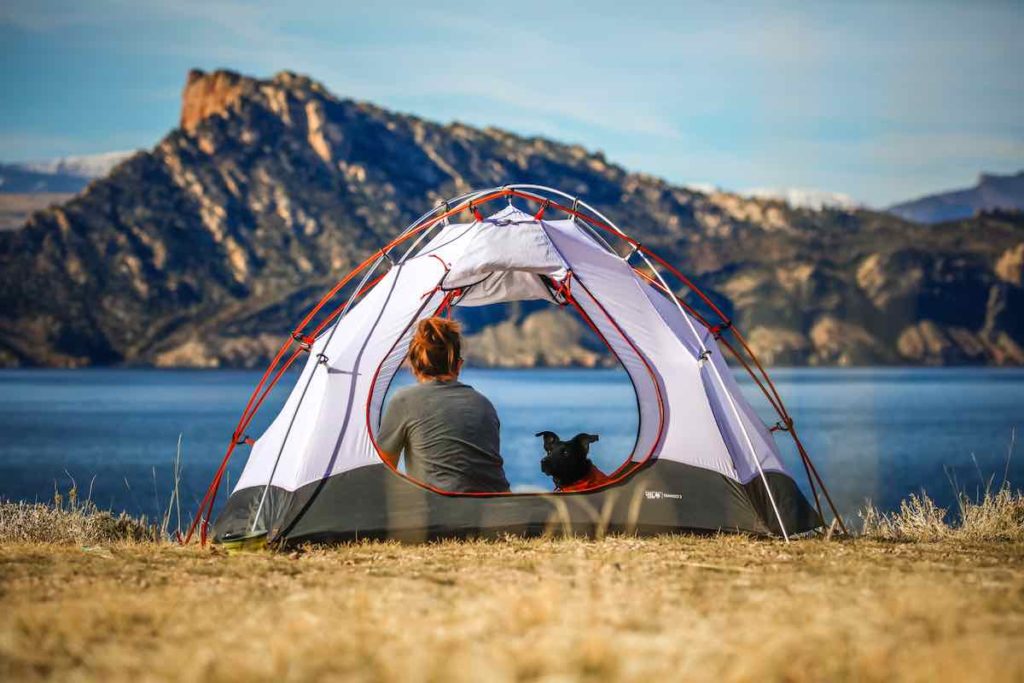
Photo by Patrick Hendry
There are many different shapes of tents: triangular, rectangular, hexagonal, and dome-shaped. They may look very different, but they all share similar components and are put together in a similar way.
Here’s what you’ll need to set up a tent:
- Ground tarp or tent footprint
- Tent Tent poles
- Rain fly
- Stakes
- Medium-sized rock (to hammer stakes)
Before you set up your tent…
- Find level ground. If the only ground you can find is at an angle, you’ll want to position the tent so your head will be uphill when you lay down inside.
- Brush away any large sticks, branches, or rocks.
- Empty the tent bag and organize each tent component on the ground.
And here are the most common steps to set up just about any tent:
- Lay the tent footprint or ground tarp flat on the ground with the shiny side up.
- Lay the tent body on top of the footprint with the head (often wider) facing uphill.
- Put the poles together by fully inserting each segment into the adjacent pole.
- Lay out the poles on top of the tent, aligning them with the grommets, or metal rings, on each corner.
- Attach the tent body to the poles using the tent clips or loops, and raise the tent up.
- Place the rain fly on top of the tent and secure it to each corner of the tent.
- Make sure the rain fly zippers match up with the tent doors.
- Insert the stakes straight down into the ground through the corner grommets of the tent and footprint.
- Use a medium-sized rock, if needed, to gently hammer the stakes to anchor each corner of the tent, door flaps, and guylines, which keep your tent more stable in strong winds.
- Leave just enough stake exposed so you can fit a finger under the hook end.
- Tighten the rainfly to cover all sides evenly with the adjustable straps, if available.
Make Your Campsite Feel Like Home
If you’re a backpacker, then minimalism is your game. You don’t have room for anything but the essentials. But if you’re car camping, it doesn’t hurt to bring a few extra comforts from home. Think about bringing an indoor-outdoor mat to put in front of your tent door. Bring a hammock to lounge and read a book. We even bring the coffee maker and plug it into the car sometimes. A real pillow can be a nice touch, as well as extra books, magazines, and board games.
No matter what you bring with you on your camping adventure, remember to respect your neighbors, take care of nature, and of course, have fun.
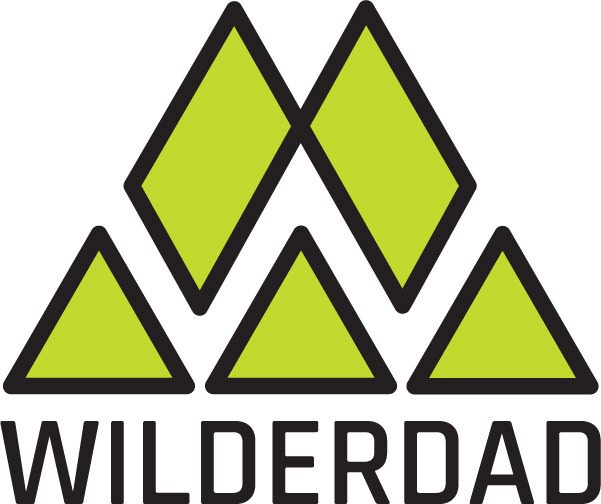
Leave a Reply
You must be logged in to post a comment.